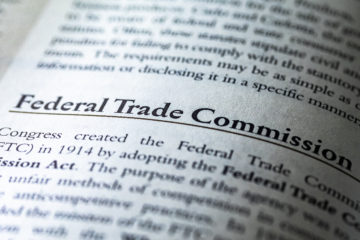In sports, a good defense can win championships—but in economics, too much defense leads to disaster. President Trump’s so-called “Liberation Day” tariff plan is a classic case of playing not to lose instead of playing to win. By raising trade barriers in response to foreign tariffs, Trump isn’t strengthening the U.S. economy—he’s trapping it in a cycle of higher costs, supply chain disruptions, and lost opportunities.
Tariffs don’t punish foreign governments—they punish American consumers and businesses by making goods more expensive and limiting choices. Worse yet, Trump’s rationale for these tariffs is all over the place. Are they meant to pressure foreign countries into dropping their trade barriers? Or are they supposed to boost American manufacturing? The two goals contradict each other, exposing the lack of a real strategy.
Market Institute President Charles Sauer writes about Trump’s strategy in RealClearMarkets:
“In sports, a little defense goes a long way, but too much defense goes absolutely nowhere. If it’s true right now for March Madness, it’s even more true in economics.
We have all seen the struggling local restaurant decide to raise prices while also trying to save money on food quality – creating its own death spiral. President Trump is doing the same with our economy. Tariffs raise the prices for citizens and businesses while also forcing the purchase of inferior, or at least more costly, goods. On the other hand, Trump could go on offense and drive the U.S. economy forward so fast that the only way to catch up would be to follow.
Trump’s so called “Liberation Day” is just around the corner. His goal is a defensive strategy where if other countries have tariffs, the U.S. will have tariffs. If other countries raise their tariffs, Trump will raise tariffs. Adding to the problem is that Trump’s plan for these tariffs is not necessarily clear, in part because his arguments seem to be different for each individual country. With Canada and Mexico, tariffs seem to be leverage for dealing with fentanyl and illegal immigration coming through our porous borders. With other countries his goals seem simply like a tit-for-tat, but that is still largely unclear. The Administration also defends these tariffs by claiming that if a company builds its products in the U.S., they can be sold tariff-free.
But the tariffs aren’t only on finished goods, which means that most goods will still be built with supplies that are more expensive because of his tariffs. Moreover, international supply chains are so complicated and interconnected at this point there’s no such thing as an American-built car.
One of Trump’s arguments is that these changes bring manufacturing back to the US. While there is nothing wrong with manufacturing jobs, it’s probably better to focus on growing jobs that require more knowledge and creativity. And, automation will continue to reduce manufacturing jobs. To make matter worse we’re already suffering labor shortages in healthcare and teaching. Therefore, if you increase manufacturing jobs, while also deceasing labor through immigration cut backs and deportation, there might just not be enough labor to go around. The results of a labor shortage are higher prices at best and shortages at worst.
However, the real issue with “Liberation Day” is that there is no real plan, and this is evident because Trump’s arguments are on two sides of the equation. First, he says that tariffs are to get other countries to do something. Second, he says that tariffs help drive American manufacturing. These arguments are mutually exclusive. If other countries drop their tariffs, and Trump responds by dropping his tariffs then he hasn’t brought manufacturing jobs to the U.S. If on the other hand other countries don’t drop their tariffs then Trump hasn’t created free-trade and instead put our economy into a death spiral like the one our restaurant friend is in.
The real answer to create better manufacturing and freer trade in the U.S. is to drop (virtually) all tariffs, and deregulate, deregulate, deregulate.”



0 Comments